Antec Mercury 240 AIO Liquid Cooler Review
Mike Sanders / 7 years ago
A Closer Look
The radiator and pump head are very well presented and the hose length is about perfect for any system setup. The hose, which incidentally is reinforced with a Kevlar coating is nice and firm while also being reasonably malleable. The bright white pump-block as well is a bit bigger than you usually see, but the design choices mean that when fitted it doesn’t look obtrusive or out of place.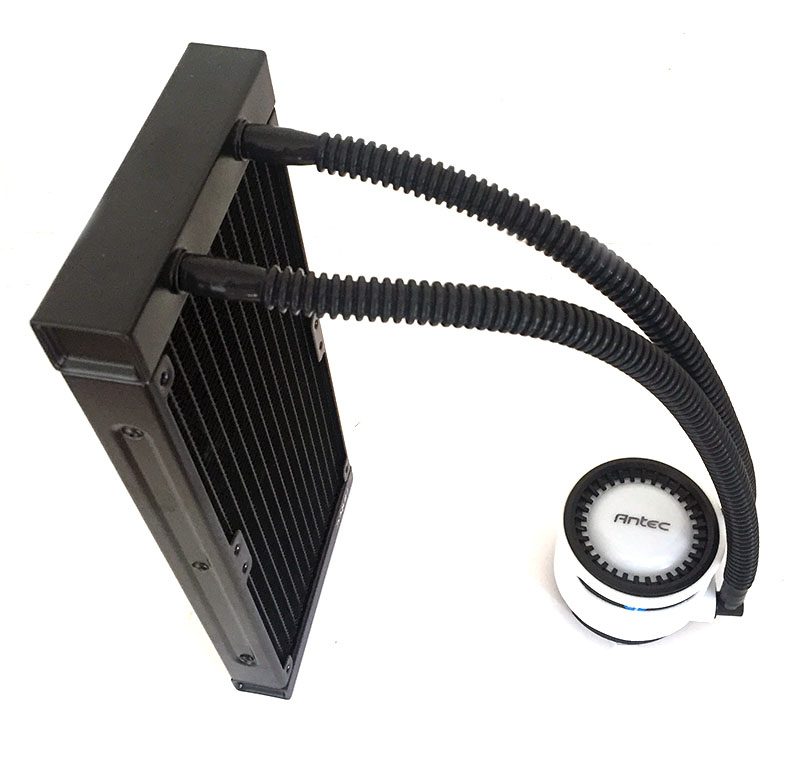
Although not a unique design choice, the pump head is powered both by a standard 4-pin fan attachment and in addition a SATA power connection. This attaches directly to the side of the pump-head and the connector itself is one of the USB types usually seen in older mobile phones. This isn’t, incidentally, a criticism as the larger port makes for a better, firmer connection. As you can see in the picture below, the pump-block does stand notably tall, but we reference Antecs design to include an extra-large pump.
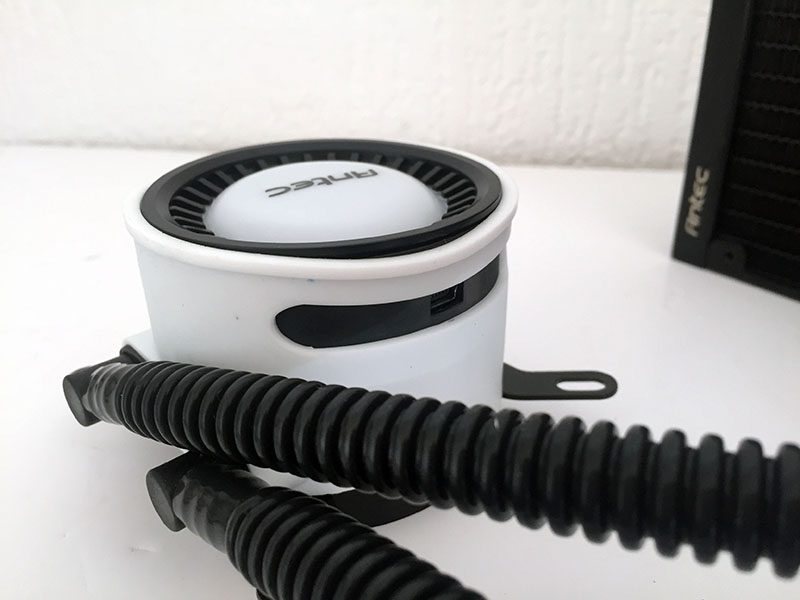
Speaking of the pump-block, we did find that on our sample, the tape adhesive had gone a bit peculiar. When we removed it if left much of the residue remaining on the copper plating. This could be a fault with the sticker or something may have happened in transit weather-wise, but either way, we would advise caution. You wouldn’t want any of that plastic to come into contact with your processor after all. In regards to the plate itself though, it is unusually not a squared design and as such, you may wish to refer to the manual for what the recommended thermal paste application is.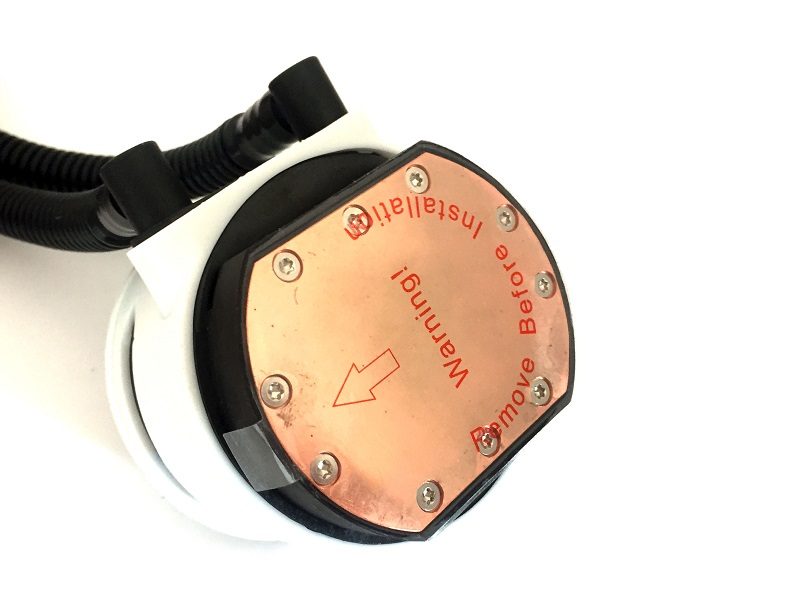
Fan and Radiator
The cooler is supplied with two of Antec’s own fans. Some very nice choices have been made with the design to make what is often (at least when turned off) the most unattractive or bland part of an AIO system look good. We are particularly impressed with the white cushioned trims to the screw holes (which cushion when attaching to reduce vibration) and also the choice to make the fan blades not completely transparent (which could affect the RGB effects).
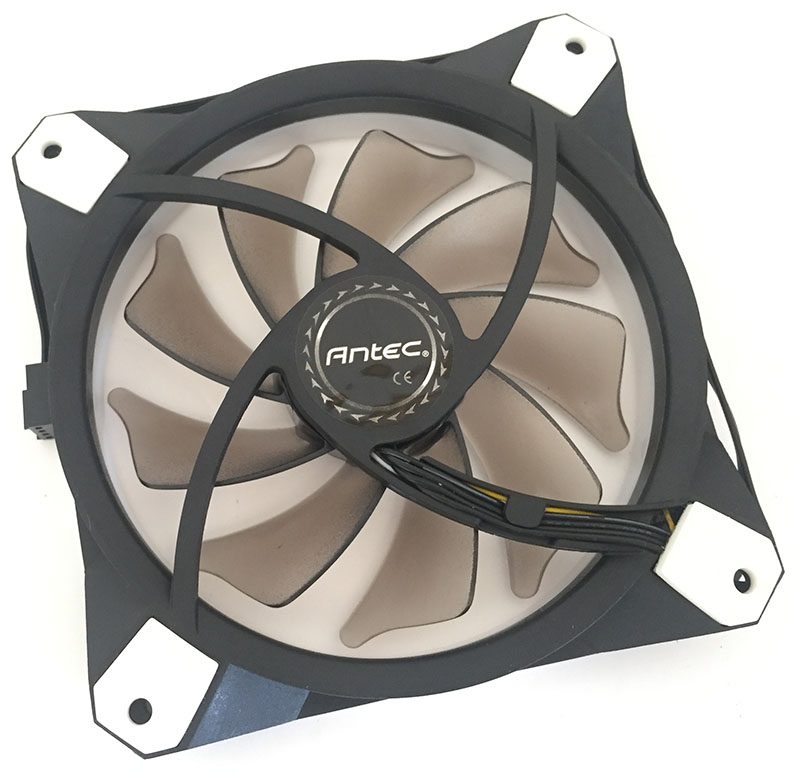
The radiator itself is somewhat bland, but Antec did at least include their logo in the corner. A minor point I know, but as above, you would be amazed at the number of times designers do not bother to do this. It’s a little touch that adds a little sign of care and attention when it was being created.
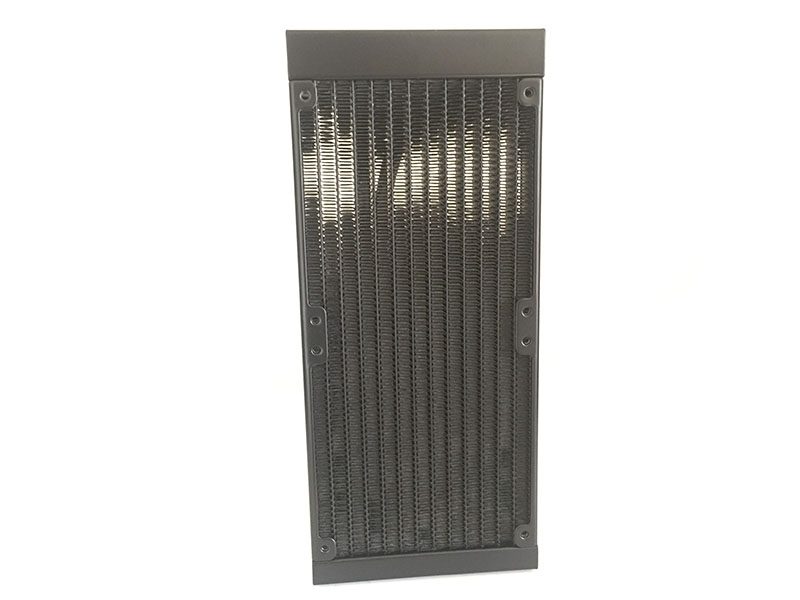
LED lighting
Both the pump-head and fans have LED lighting effects. These are not designed to run in sync with any motherboard setup and you do not have any manual control over the colours selected. Instead, they are designed to change colour based on the current operating temperature. Blue is cool, green is average and red is hot. This certainly isn’t the first time we have seen this used for coolers, but it is one of the most practical usages for RGB we can think of.
We have taken a brief video below displaying the lighting effects. Although based on the system this operates, we were unable to successfully catch the transitions. This is perhaps indicative of good news to come on the performance figures.



















